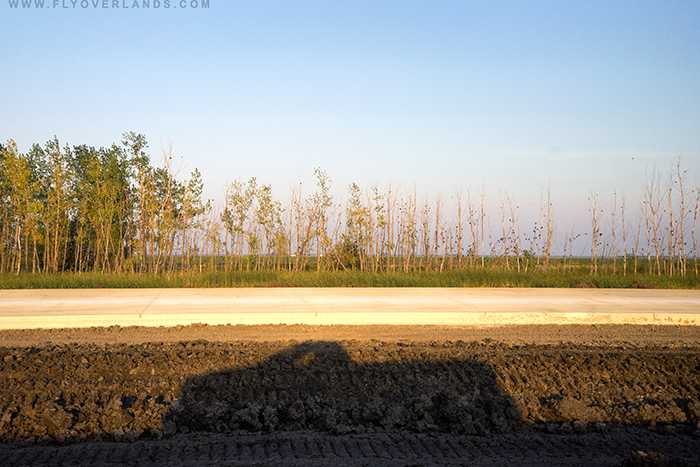Gas Station Gourmet: The Discount Burrito
Somewhere in South Dakota
by Cassia Reynolds
I like to think of myself as the apex predator of the cheap eats ecosystem. My collective experiences as a college student in Manhattan, a minimum-wage worker in Australia, and a backpacker have gifted me with a spidey-sense-esque ability to spot “marked-down” and “clearance” stickers at grocery stores. I have the patience and precision of a lion huntress going in for the kill when scanning the aisles. If there’s a good food deal out there, I will find it. And if it’s cheap and edible-looking enough (my parameters here are quite wide), I will buy it and I will eat it.
I noticed (with the all-seeing gaze of a hawk that catches the movement of a mouse while flying over an open field) $1.00 scrawled in permanent marker behind the rural gas station’s hot food display window. Hello bacon burrito.
I reached into the warm, moist air of the case. My fingers curled around the wrinkled aluminum wrapper of the burrito. It felt just slightly above room temperature. I hesitated.
It’s not even ten o’clock in the morning. Why is this breakfast burrito 67% off? Unless it’s yesterday’s-
I shook the bad thoughts from my head. The discount outweighed the possible safety hazards. I bought it with my spare change, grinning and wondering if the disinterested-looking cashier was judging me as he rang it up.
I returned triumphantly to my two friends who were waiting in the car. When I slapped my prize on the dashboard, they both stared at it in horror.
“Are you really going to eat that?” One asked.
“Yeah, dude. It’s bacon. You can’t mess up bacon. And it was only $1!”
“But why was it only $1?”
I ignored that ridiculous question, unwrapping my breakfast prize and holding it before me. I couldn’t tell if the pale, flour tortilla wrap was cooked.
My first bite was mostly chewy tortilla. It wasn’t bad. Just very plain. My next mouthful revealed the intricate textures of the dish: half-melted strings of cheddar cheese; crispy, bite-sized microwaveable bacon bits (and yes I can tell if it’s microwavable or freshly fried); the mushed tomato liquid of Tostitos Mild Salsa; and a mostly flavorless, soft, crumbly substance that I couldn’t identify.
If anything, the burrito was true to its name; the thing was stuffed with bacon. Entirely enjoyable for a (sometimes excessive) carnivore like myself. The flavor was so bacon-y that it wasn’t until the third bite that I realized the soft crumbly chunks were overcooked scrambled eggs.
As we drove away from the gas station, I continued to munch. A well-packed burrito is a nearly perfect car food; it’s easy to hold and drive, every bite is an even distribution of flavor, and the wrapper usually makes an excellent impromptu napkin. And this bacon-laden pocket was no exception to that rule.
Fast Forward Two Hours Later. I’m in good shape; there are no unwanted aftereffects from my breakfast burrito! This has been a successful bargain meal adventure.
- Cost: $1.00
- Tastiness: **
- Weirdness (Sights, Smells, & Texture): ***
- Car-Safety: *****
- Digestion: *****
- Overall Edibility: **
- Value: *****
Conclusion: Totally worth your $1. But not more. The original price of $2.99 was damn extortion. There’s just not enough flavor to merit more than a bargain hunt - because as we all know, it just tastes better when it’s an awesome deal.




















































































































